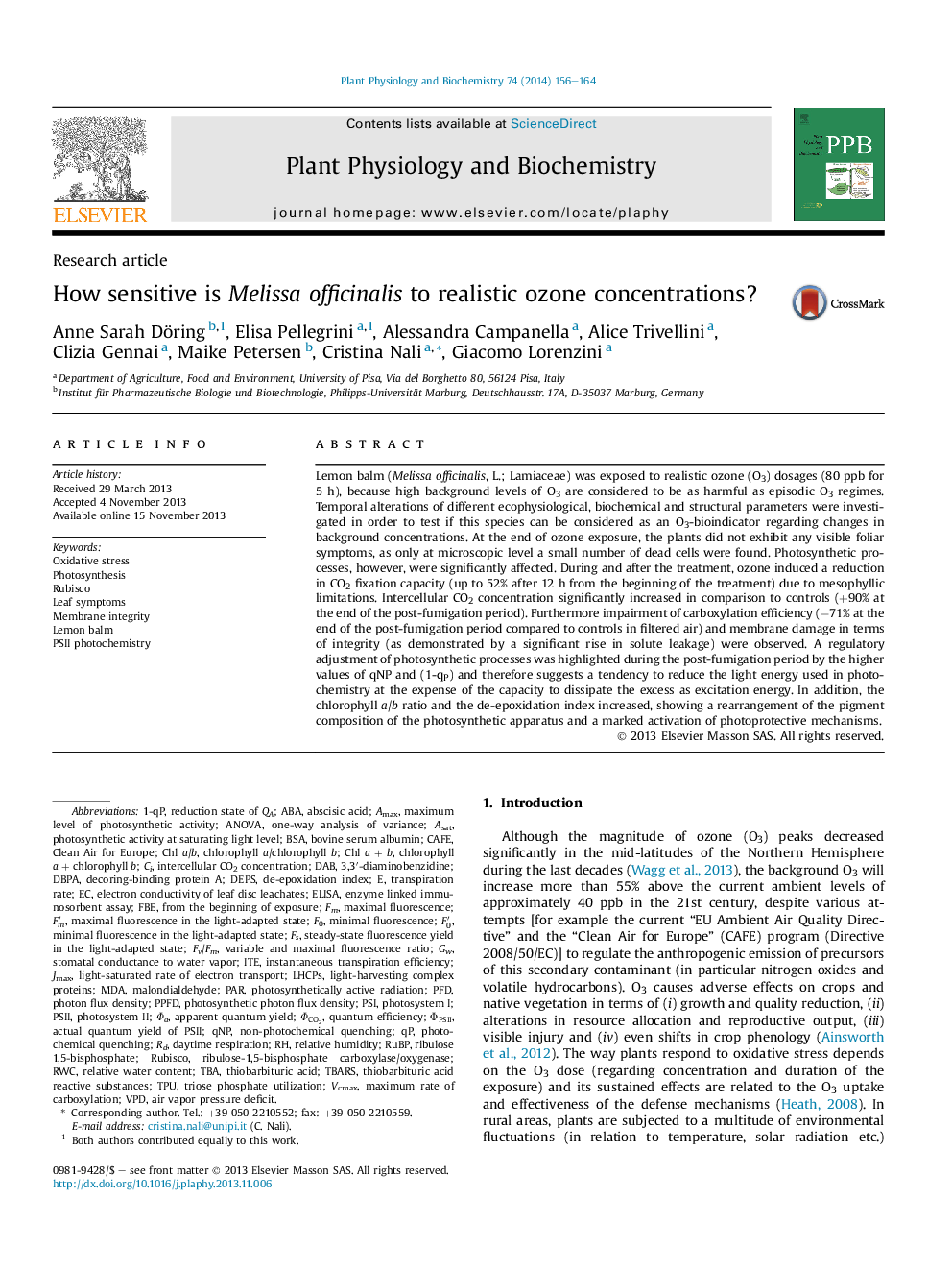| Article ID | Journal | Published Year | Pages | File Type |
|---|---|---|---|---|
| 2015948 | Plant Physiology and Biochemistry | 2014 | 9 Pages |
Abstract
Lemon balm (Melissa officinalis, L.; Lamiaceae) was exposed to realistic ozone (O3) dosages (80Â ppb for 5Â h), because high background levels of O3 are considered to be as harmful as episodic O3 regimes. Temporal alterations of different ecophysiological, biochemical and structural parameters were investigated in order to test if this species can be considered as an O3-bioindicator regarding changes in background concentrations. At the end of ozone exposure, the plants did not exhibit any visible foliar symptoms, as only at microscopic level a small number of dead cells were found. Photosynthetic processes, however, were significantly affected. During and after the treatment, ozone induced a reduction in CO2 fixation capacity (up to 52% after 12Â h from the beginning of the treatment) due to mesophyllic limitations. Intercellular CO2 concentration significantly increased in comparison to controls (+90% at the end of the post-fumigation period). Furthermore impairment of carboxylation efficiency (â71% at the end of the post-fumigation period compared to controls in filtered air) and membrane damage in terms of integrity (as demonstrated by a significant rise in solute leakage) were observed. A regulatory adjustment of photosynthetic processes was highlighted during the post-fumigation period by the higher values of qNP and (1-qP) and therefore suggests a tendency to reduce the light energy used in photochemistry at the expense of the capacity to dissipate the excess as excitation energy. In addition, the chlorophyll a/b ratio and the de-epoxidation index increased, showing a rearrangement of the pigment composition of the photosynthetic apparatus and a marked activation of photoprotective mechanisms.
Keywords
TBARSPSIRuBPPFDRuBisCOTPUPSIITBAPSII photochemistryVPDLHCPsVcmaxMDAFBEdbpAPPFDDEPsRWCQNPABAF0′ITEAmaxDABΦPSII3,3′-diaminobenzidineBSAFm′Fv/Fmribulose-1,5-bisphosphate carboxylase/oxygenasebovine serum albuminenzyme linked immunosorbent assayAsatabscisic acidThiobarbituric acidLemon balmQuantum efficiencyPhotosynthetically active radiationANOVAone-way analysis of variancephoton flux densityELISAOxidative stressParJmaxmaximal fluorescenceNon-photochemical quenchingstomatal conductance to water vaporRelative humidityPhotochemical quenchingribulose 1,5-bisphosphateApparent quantum yieldphotosystem Iintercellular CO2 concentrationPhotosynthesisphotosynthetic photon flux densityPhotosystem IIminimal fluorescencemalondialdehydeRelative water contentthiobarbituric acid reactive substancestranspiration rateCaféMembrane integrity
Related Topics
Life Sciences
Agricultural and Biological Sciences
Plant Science
Authors
Anne Sarah Döring, Elisa Pellegrini, Alessandra Campanella, Alice Trivellini, Clizia Gennai, Maike Petersen, Cristina Nali, Giacomo Lorenzini,
